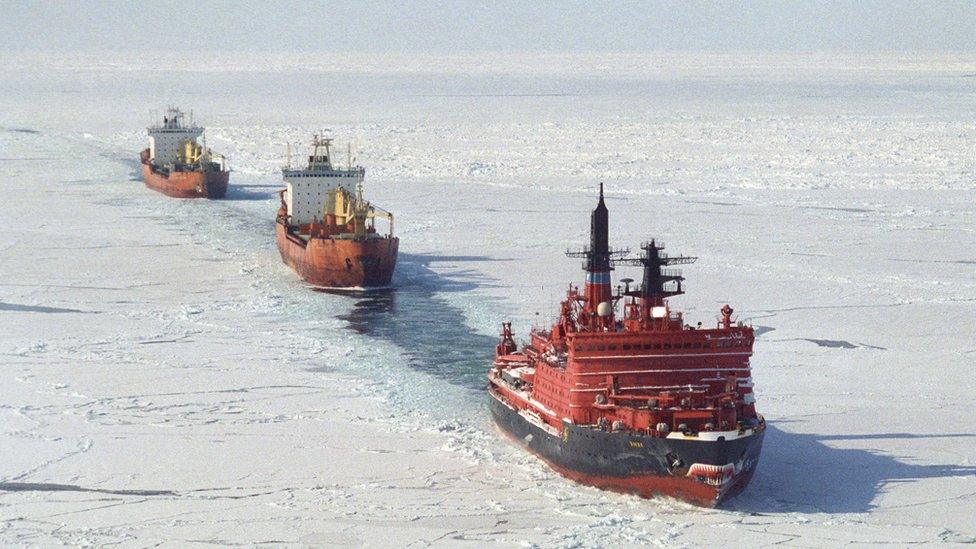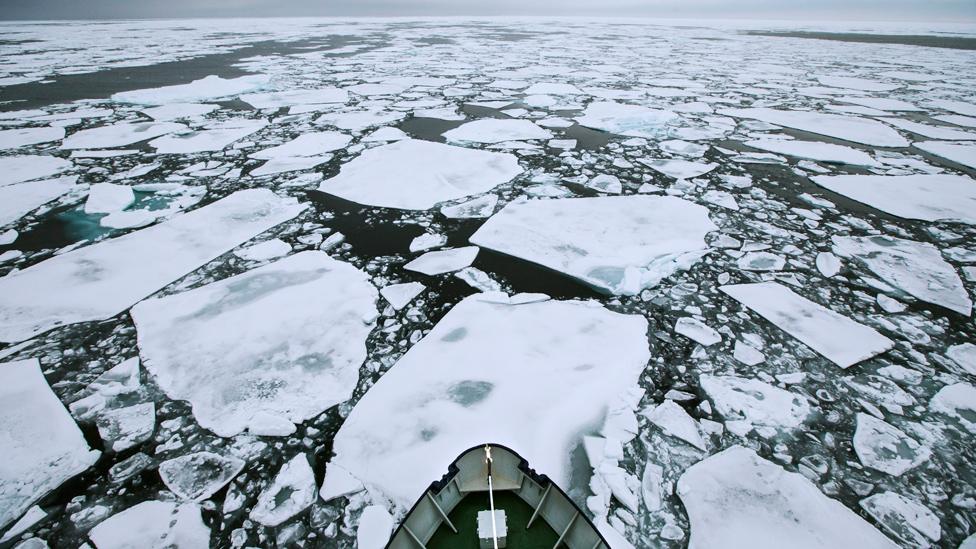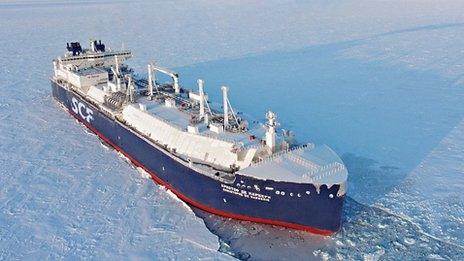Container ship to break the ice on Russian Arctic route
- Published

The way it used to be? A nuclear-powered ice-breaker escorts tankers in the Russian Arctic
A Danish vessel setting sail from Vladivostok this week is set to become the first container ship to tackle the Arctic sea route north of Russia.
The Venta Maersk, owned by Maersk Line, and carrying 3,600 containers, hopes to reach St Petersburg by late September.
That could be up to 14 days faster than the southern route via the Suez Canal.
Maersk will collect data on the Northern Sea Route to see if the melting of Arctic sea ice has made the passage economically viable.
Maersk said: "The trial passage will enable us to explore the operational feasibility of container shipping through the Northern Sea Route and to collect data."
The Venta Maersk, designed as a new "ice-class" container ship, will carry frozen fish and other refrigerated and general cargo.
The route stretches from the Bering Strait in the east between Russia and Alaska to Norway in the west.
However, Maersk added: "Currently, we do not see the Northern Sea Route as a commercial alternative to our existing network, which is defined by our customers' demand, trading patterns and population centres."

Nuclear icebreakers
Until now the the route has required an escort of expensive nuclear icebreakers to accompany any vessel.
But global warming, which has raised temperatures along the route during the summer to over 30C, is changing its viability.
A report from the Copenhagen Business School in 2016, external found that shipping through the Northern Sea Route would become economically feasible in about 2040 if the ice cover continued to diminish at its present rate.

The Christophe de Margerie moored in St Petersburg
It may happen even earlier. The Christophe de Margerie, a 984ft liquefied natural gas tanker built specifically for the journey, became the first ship to sail the route unaided, external last year, while the Russian gas company Novatek has used the route for specially built tankers this year.
China is also using the Northern Sea Route as part of its One Belt, One Road initiative to build trade routes across Eurasia.
Its state-owned Cosco shipping company sent a multi-purpose cargo ship, the Lian Hua Song, into a Russian port last autumn for the first time via the route, delivering equipment for the construction of a subway and a fertiliser plant.
- Published6 September 2016

- Published13 December 2017

- Published24 August 2017
